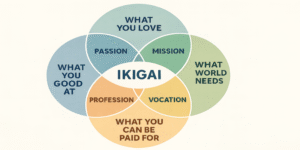The proverb “Those who speak rudely cannot sell honey, those who speak nicely can sell chilli” captures the profound influence of communication style on success in human interaction. Honey represents something inherently desirable, while chilli symbolises something sharp or challenging. Yet the proverb reminds us that no matter how appealing a product or idea may be, poor communication can undermine it. Conversely, even difficult or unappealing propositions can be accepted if delivered with politeness, empathy, and respect.
This article explores the meaning of the proverb by examining rude versus polite speech, and the broader role of communication style in personal relationships, business, leadership, and negotiations.
1.0 Honey: Symbol of Sweetness and Desirability
Honey symbolises sweetness and attraction, both literally and metaphorically. Throughout history it has represented goodness, healing, and divine favour (Carroll, 2013). In modern markets it remains a premium product, valued for its natural sweetness.
The proverb suggests that even honey can lose appeal if presented rudely. Communication acts as the medium through which inherent value is either amplified or diminished (Adler, Rosenfeld & Proctor, 2019). A rude seller of honey risks alienating customers, preventing them from recognising the product’s natural value.
Example: A luxury goods retailer with superior products may still fail if sales staff communicate dismissively. Consumers increasingly link service experience with brand loyalty (Parasuraman, Zeithaml & Berry, 1985).
2.0 Rude Speech: Overshadowing Inherent Value
Rudeness—abruptness, condescension, or insensitivity—creates barriers that overshadow even the best offerings. Mehrabian’s (1972) classic research shows that people often respond more strongly to tone and delivery than to content.
A rude salesperson selling honey may drive customers away, despite product quality. Similarly, in leadership, dismissive communication can demotivate teams, undermining organisational goals.
Goleman (1995) emphasises that emotional intelligence is key to managing relationships; rudeness erodes trust and goodwill, both vital for long-term success.
3.0 Chilli: Symbol of Sharpness and Challenge
In contrast, chilli symbolises sharpness and difficulty. Its strong flavour divides opinion, much like controversial ideas or challenging tasks (Brillat-Savarin, 2009). Yet the proverb suggests that even chilli can be “sold” through polite and respectful communication.
Example: A company promoting a new, unfamiliar technology may encounter scepticism. However, through empathetic communication—emphasising benefits, listening to concerns, and framing challenges positively—leaders can build acceptance.
Thus, chilli becomes a metaphor for any difficult or less desirable proposition that can succeed when wrapped in kind communication.
4.0 Nice Speech: Enhancing Receptivity
Politeness and empathy transform resistance into receptivity. Brown and Levinson’s (1987) politeness theory highlights how careful language fosters respect and cooperation. Covey (1989) further argues that effective communication is grounded in respect for others, creating conditions where people feel valued.
Example: A skilled salesperson selling chilli may focus on its health benefits or culinary excitement, reframing perceptions. Rather than coercion, the seller uses positive and respectful communication, making customers open to considering the product (Brett, Behfar & Kern, 2007).
5.0 The Power of Communication Style
The proverb underscores that style matters as much as substance. Thompson, Wang and Gunia (2021) argue that in negotiation and persuasion, delivery often determines outcomes. Warmth, politeness, and respectful tone shape perceptions more than factual content.
Burgoon, Guerrero and Floyd (2016) support this with evidence that nonverbal and paralinguistic cues—such as tone, pitch, and friendliness—play a significant role in how messages are received.
In short, how something is said often matters more than what is said.
6.0 Kindness Enhances Receptivity
Kindness in communication creates openness, empathy, and willingness to engage. Rogers (1961) identified empathy as central to building authentic connections, while Bass (1990) showed that transformational leaders inspire greater performance by using encouragement and vision rather than criticism.
Example: In workplaces, leaders who frame difficult feedback with kindness—acknowledging strengths while suggesting improvements—are more effective than those who rely on blunt criticism.
Polite communication conveys respect, which in turn fosters trust and collaboration.
7.0 Rudeness Negates Value
Conversely, rude speech negates value, no matter how inherently attractive the offering. Negative communication creates defensiveness and resistance (Mehrabian, 1972).
Example: In negotiations, rude or aggressive behaviour often derails discussions, preventing agreement even when both sides would benefit (Fisher & Ury, 1981). Similarly, in customer service, poor communication overshadows even excellent products, leading to dissatisfaction and loss of loyalty.
Thus, rudeness acts as a barrier, not just to selling products but also to sustaining relationships and opportunities.
8.0 Turning Challenges into Opportunities
Perhaps the deepest wisdom in the proverb is that communication style transforms challenges into opportunities. Politeness, empathy, and tact can shift perception from resistance to curiosity, and from rejection to acceptance.
Example: In diplomacy, tactful speech often defuses tension and opens space for cooperation, even in high-conflict situations. Carnegie (1936) long argued that winning people’s goodwill through kind speech is more powerful than forcing compliance.
In everyday life, those who master kind, persuasive communication are able not only to “sell chilli” but also to build relationships, trust, and long-term influence.
The proverb “Those who speak rudely cannot sell honey, those who speak nicely can sell chilli” offers timeless insight into the power of communication style. Honey symbolises sweetness and inherent desirability, while chilli symbolises difficulty and challenge. Yet the way we speak—whether with rudeness or kindness—determines whether value is recognised or dismissed.
Research shows that rude communication overshadows even the best offerings, while kind and empathetic communication fosters trust, openness, and acceptance. In leadership, business, negotiations, and personal relationships alike, the tone of speech often outweighs content in shaping outcomes.
Ultimately, the proverb reminds us that words carry power. Choosing to communicate with politeness, empathy, and respect enables us not only to sell chilli but also to turn obstacles into opportunities. In a world defined by complexity and diversity, the ability to speak kindly remains one of the most valuable human skills.
References
Adler, R.B., Rosenfeld, L.B. and Proctor II, R.F. (2019). Interplay: The process of interpersonal communication. 14th edn. Oxford: Oxford University Press.
Bass, B.M. (1990). ‘From Transactional to Transformational Leadership: Learning to Share the Vision’. Organisational Dynamics, 18(3), pp.19–31.
Brillat-Savarin, J.A. (2009). The Physiology of Taste. London: Penguin.
Brown, P. and Levinson, S.C. (1987). Politeness: Some Universals in Language Usage. Cambridge: Cambridge University Press.
Burgoon, J.K., Guerrero, L.K. and Floyd, K. (2016). Nonverbal Communication. 6th edn. New York: Routledge.
Brett, J., Behfar, K. and Kern, M.C. (2007). ‘Managing Multicultural Teams’. Harvard Business Review, 85(11), pp.84–91.
Carnegie, D. (1936). How to Win Friends and Influence People. New York: Simon and Schuster.
Carroll, D. (2013). ‘Honey and Healing: From Folklore to Modern Practice’. British Medical Journal, 347(7924), pp.12–14.
Covey, S.R. (1989). The 7 Habits of Highly Effective People. New York: Free Press.
Fisher, R. and Ury, W. (1981). Getting to Yes: Negotiating Agreement Without Giving In. New York: Penguin Books.
Goleman, D. (1995). Emotional Intelligence: Why It Can Matter More Than IQ. New York: Bantam Books.
Mehrabian, A. (1972). Nonverbal Communication. Chicago: Aldine-Atherton.
Parasuraman, A., Zeithaml, V.A. and Berry, L.L. (1985). ‘A Conceptual Model of Service Quality and Its Implications for Future Research’. Journal of Marketing, 49(4), pp.41–50.
Thompson, L.L., Wang, J. and Gunia, B.C. (2021). Negotiation. 7th edn. London: Pearson.









